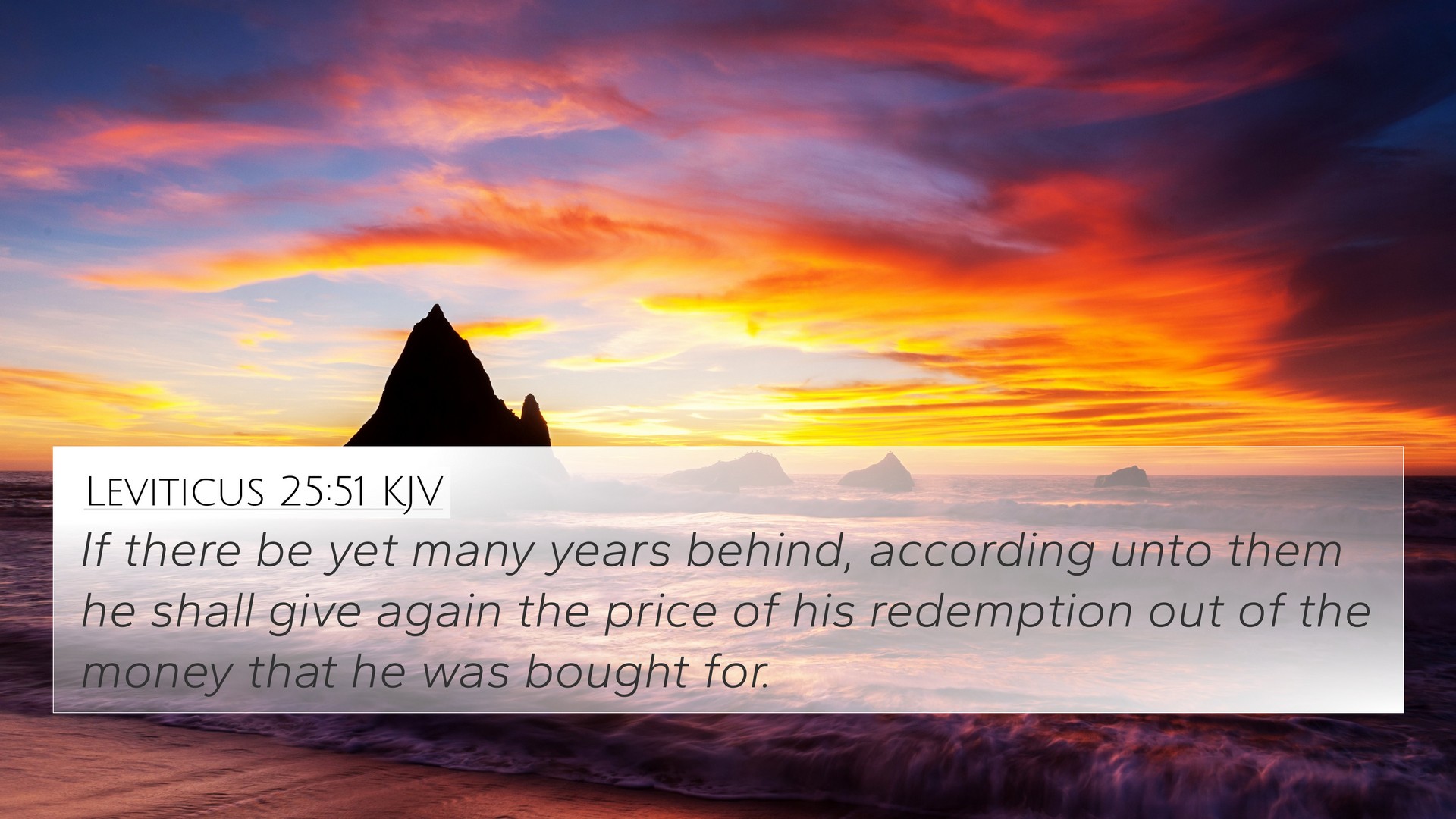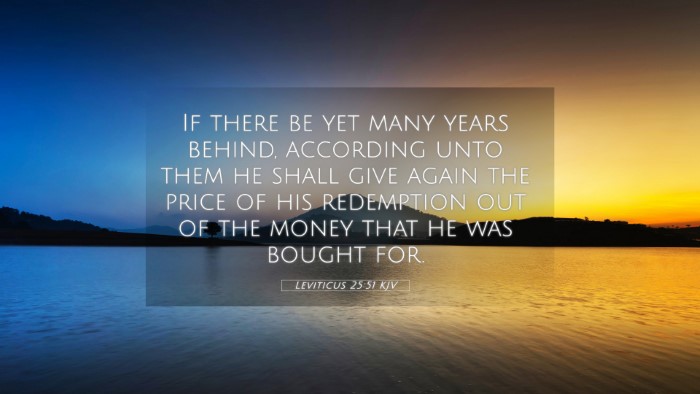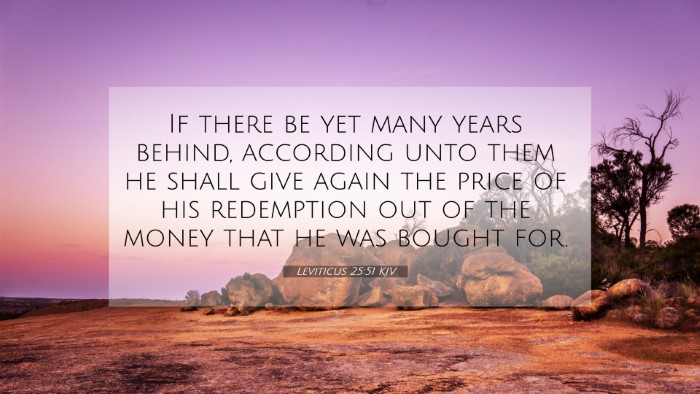Understanding Leviticus 25:51
Leviticus 25:51 states: "If there be yet many years behind, according unto them he shall give again the price of his redemption out of the money that he was bought for." This verse is part of the laws concerning the redemption and sale of property and people during the Jubilee year. Below, we summarize insights from renowned public domain commentaries to help readers grasp the meaning of this scripture.
Verse Context and Principles of Redemption
In the context of Leviticus, the laws provided to the Israelites emphasized the importance of redemption, whether it concerned land or individuals who had fallen into servitude. This verse illustrates the method by which a person could regain property or freedom by paying a proportional price based on the number of remaining years of servitude.
Insights from Commentaries
-
Matthew Henry's Commentary:
Henry emphasizes that the law illustrates God's mercy and justice. He explains that the opportunity for redemption signifies hope and a chance for restoration, highlighting God's desire for the well-being of His people.
-
Albert Barnes' Notes:
Barnes points out that this verse details a fair and just system for recalculating redemption values. He underlines the importance of equity in transactions as a principle God established for the community of Israel.
-
Adam Clarke's Commentary:
Clarke takes a theological perspective, noting that just as individuals could redeem property, humanity is invited to redemption through Christ. This verse serves as a foreshadowing of the ultimate redemption offered in the New Testament.
Biblical Cross-References
Leviticus 25:51 interlinks with multiple scriptures throughout the Bible, showcasing themes of redemption, justice, and restoration. Here are some related verses:
- Exodus 21:2 - Discusses the laws concerning Hebrew servants.
- Leviticus 25:48 - Explains the process of redeeming an Israelite sold into servitude.
- Deuteronomy 15:12-15 - Addresses the release of Hebrew servants and the principles of generosity.
- Ruth 4:3-6 - A narrative of redemption via Boaz, illustrating the practical application of these laws.
- Isaiah 61:1 - Prophetic proclamation of freedom and redemption.
- Galatians 4:5 - Discusses redemption through Christ, connecting Old Testament laws to New Testament grace.
- 1 Peter 1:18-19 - Highlights the theme of redemption through the blood of Christ.
Thematic Connections Between Scriptures
Understanding Leviticus 25:51 requires looking at how the themes of redemption and justice thread through both the Old and New Testaments. Here are ways these themes connect:
- Redemption as a Central Theme: Redemption in Leviticus sets the groundwork for understanding how Christ's sacrificial death redeems mankind.
- Equity and Justice: The equitable redistributions highlighted in this verse reflect God's desire for societal justice, echoed in the teachings of Christ and Apostle Paul.
- The Year of Jubilee: This concept of restoration and returning to one’s inheritance resonates in both physical and spiritual aspects of redemption.
- Human Liberty: The laws surrounding servitude translate to a broader understanding of freedom from sin through Christ.
Applying the Insights
When studying Leviticus 25:51, consider using tools for Bible cross-referencing to delve deeper into the interconnectedness of scripture. Methods for cross-referencing, alongside a comprehensive Bible concordance, can enhance one’s understanding of biblical themes and their applications.
How to Use Bible Cross-References
The following steps can guide you in finding related scriptures:
- Identify Key Themes: Start by identifying the main themes from the verse you are studying.
- Utilize a Bible Concordance: Use a concordance to search for verses that contain similar terms or concepts.
- Read in Context: Always read verses in their broader context to glean more profound insights.
- Engage with Biblical Commentaries: Refer to various commentaries for diverse perspectives on the verse.
Conclusion
Leviticus 25:51 is rich with theological implications and connects with various biblical themes, making it an essential scripture for understanding both Old Testament law and New Testament grace. Through comparative analysis and inter-biblical dialogue, one can appreciate the depth of God’s message regarding redemption.


